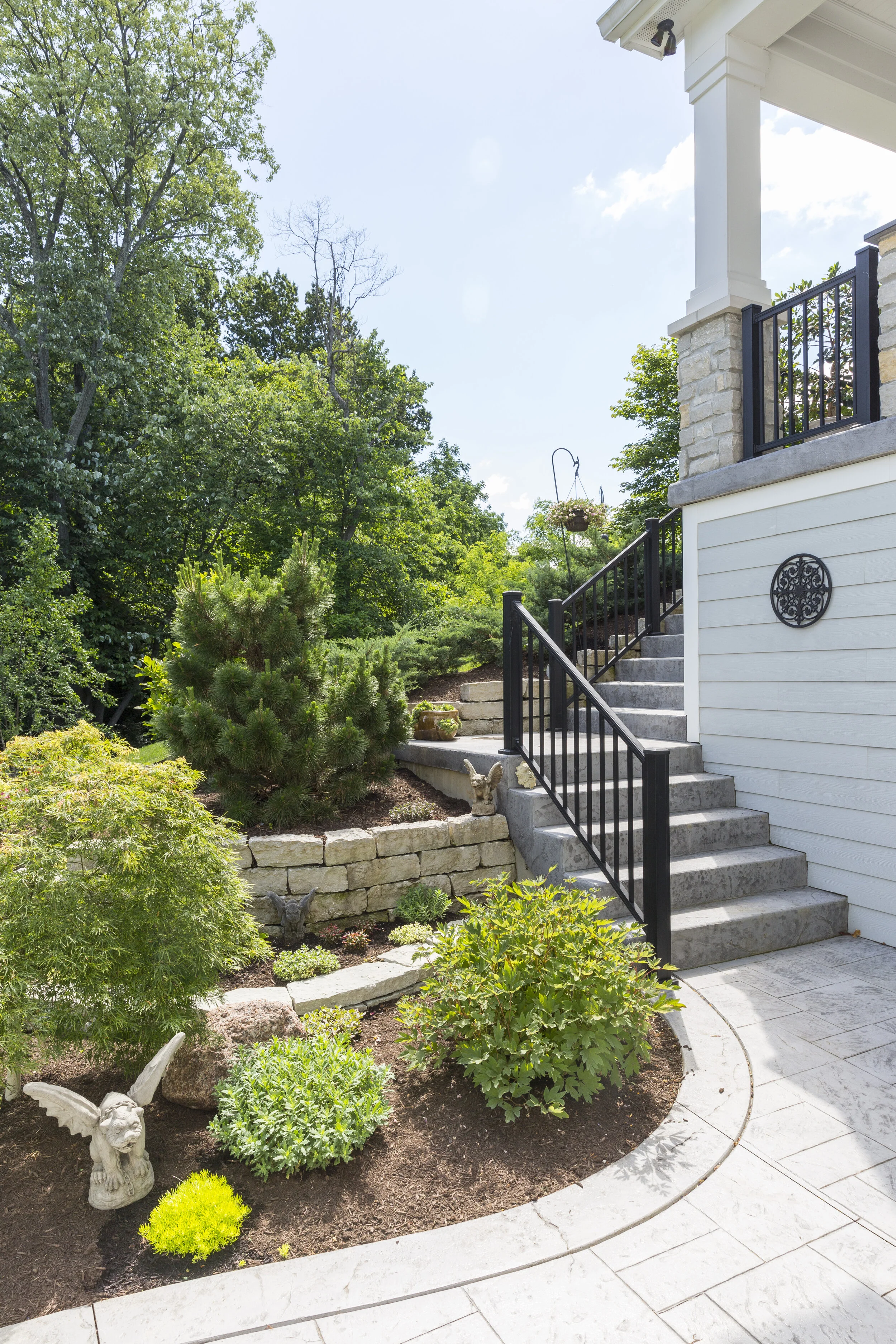Cincinnati is known for its seven hills, and many new home buyers in our area have to deal with hilly, sloped lots. Luckily, the solution is simple: In new construction landscaping, retaining walls can be life savers.
Landscaping Superheroes
Retaining walls look beautiful, but they are also tough and strong. Holding back literally tons of soil requires brawn and a bit of engineering. For a very steep slope, a single retaining wall might be sufficient. Another option for a steep slope is to build a series of walls to create tiers or terraces. These level areas can be used for flower beds, patios or lawn.
Retaining walls may look simple, but making sure they are stable requires some engineering. Particularly with new construction, builders often need to cut into a slope to ensure a level area for the new house. To keep that disrupted slope from eroding or sliding, a retaining wall or walls will be necessary. Walls over three or four feet should be designed by someone with experience in specifying the appropriate reinforcement and choosing the proper materials.
Anatomy of a Retaining Wall
Typically, retaining walls, like those found in new construction landscaping, start with a base layer of sand and crushed stone. This layer is tamped down either by hand or machine to be compact and level. If this base layer is not leveled, building a level wall is impossible. The first stones, blocks or other wall materials are stacked on top of the base layer.
Behind the wall, on the slope side, drainpipe (sometimes called drain tile) is installed to move water away from the wall. Layers of gravel above and below the pipe allow water to filter down to the pipe. The gravel also helps the wall stand up to the pressure of the heavy soil behind it. For walls over 3 feet tall, we use a geogrid mesh that helps stabilize the wall. The geogrid ties all the layers of fill together into one reinforced mass and is installed according to engineering specifications.
Another way to allow for drainage is to insert small diameter pipes between the first course of the wall’s stones or blocks. This pipe, set perpendicular to the wall, moves water from behind the wall out to the face of the wall and away.
A properly installed retaining wall will be level, but will angle slightly back toward the hillside. This backward angle toward the slope of the site helps minimize soil pressure on the wall. Finally, the wall may be topped with a larger capstone.
Getting the Look
You’ll find a range of styles for retaining walls in new construction landscaping. Walls can be curved or straight and can vary in height. Your landscape designer can help you choose between brick, stone, blocks or even wood. Wall materials can match or complement the colors of other hardscaping materials used in your new construction landscaping. Topping walls with a flat capstone can create a place to sit or a ledge for flowering containers.
Retaining walls add character, dimension and interest to landscaping. As a final touch, spotlights or uplights can make them stand out at night and call attention to their beautiful texture.
New Construction Landscaping Ideas
Whether you’re building a new home or are looking to refresh your current landscaping, we would be happy to hear your ideas. Contact us today for a free, no-obligation consultation.





